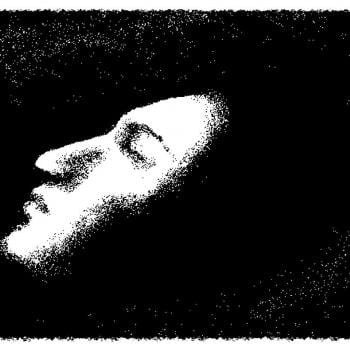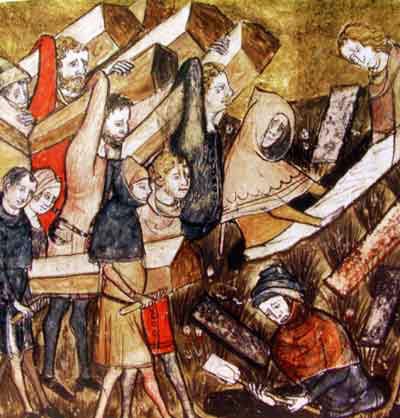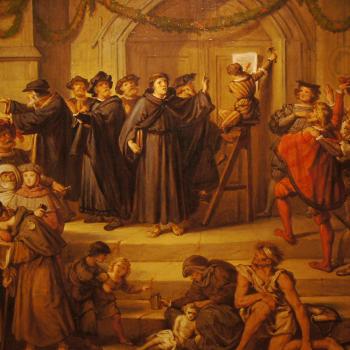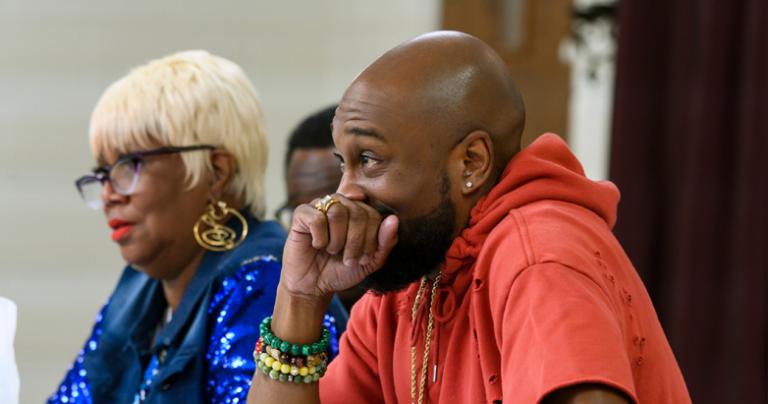- Trending:
- Pope Leo Xiv
- |
- Israel
- |
- Trump
- |
- Social Justice
- |
- Peace
- |
- Love

RELIGION LIBRARY
Protestantism
Missions and Expansion
Protestantism spread quickly among Europeans (in Europe and America) for a couple of reasons. Europe in the 16th century was to a great extent a place of religious anxiety. The theology preached by the priests, which emphasized human cooperation with God in achieving salvation, did not match a society that had come through the Black Plague, Church schism (there had been at one point three popes simultaneously), and massive social changes such as urbanization and the rise of a middle class. The Protestant message of salvation based on God's grace alone, and not depending on human efforts, resonated with many people. An unsettled population was relieved to have their salvation solely in the hands of God.
It also spread because of political tensions in Europe. Many princes found it convenient to align themselves against the pope and/or Emperor, especially since joining the Protestant reform movement made it possible to "secularize" church property (seize it for the good of the people, as administered by the state). It also released rulers from certain tax and tithe burdens owed to the Catholic Church, and allowed civic rulers in many cases to take greater influence over church leadership, rather than having church leadership selected by the pope in Rome.
As Europeans immigrated to America, they brought their religion with them. German and Dutch Protestants often formed ethnic churches, such as Lutheran Churches in Missouri, or Dutch and German Reformed Churches in Pennsylvania. (Most of these ethnic denominations have merged or otherwise reached out to become more diverse and less narrowly ethnic.) English settlers brought both Anglicanism and Puritanism with them. The first English settlers in America were Anglicans, who landed at Jamestown in Virginia in 1607. In 1620, English Puritans landed in Massachusetts.
In Europe, the primary thrust of evangelism and missions at the beginning of the Protestant movement was directed toward Roman Catholics who, the reformers felt, were deceived about their salvation and thus in need of a fresh presentation of the gospel. Only after the violent conflicts created by Roman Catholic and Protestant groups trying to subjugate one another—often called the Wars of Religion, which began soon after Luther's first acts of dissent—ceased with the Peace of Westphalia in 1648 did Protestant groups begin to develop a greater interest in evangelizing other people groups.
Nicholas von Zinzendorf (1700-1760), a German Protestant, became one of the early advocates for missionary work. He worked closely with the Moravians, a Bohemian group of believers that had actually developed from Jan Hus' (1369-1415) ministry even before Luther. These Moravians had migrated north and had settled on lands belonging to Zinzendorf. Together they initiated the first major organized missionary efforts of the Protestant churches. They sent missionaries (usually lay people, not clergy) to the Americas, the Caribbean, Africa, and the Far East.
David Brainerd (1718-1747) exemplifies the colonists' interest in missions among the Native Americans. He worked with the Delaware tribe in Pennsylvania and New Jersey, and inspired many others to move west with the gospel. More sustained efforts to send missionaries were inspired by the revival movements of John Wesley (1703-1791) and George Whitefield (1714-1770). John Wesley himself came to Georgia in 1736, intending to preach to the Indians. He ended up preaching mostly to European colonists, and considered his trip to be largely a failure. George Whitefield preached in the colonies repeatedly, visiting the New World seven times. Wesley and Whitefield, both Anglicans and evangelists, demonstrate the reality that by the 18th century, piety and faith had eroded, both in the colonies and throughout England; thus much of their mission was directed to re-evangelization of the backslidden rather than to the acquisition of new converts.
There were, however, many efforts among Protestants to evangelize among the Native Americans as the frontier moved west. Missionaries often set up boarding schools for Indian children in an effort to save them from the extermination that was being visited upon so many Indian nations, and to create in them European-like citizens. While founded with good intentions, these schools separated these children from extended families, the structure of which Europeans did not fully understand. In some instances, these schools turned out to be cruel places with subsequent histories of physical and mental abuse. Not only were children taken away from extended families who, in Native American societies, were legitimate guardians (Europeans often saw these children as "orphans"), the schools taught the children that they had to reject their original cultures and become European.
This approach was not universal. Some Protestant missionaries adopted the culture of their mission—learning the languages and translating the Bible into them, dressing like indigenous peoples, and even using the religious traditions of the natives to demonstrate the ways they believed God had already reached out to them. William Carey (1761-1834), an English Baptist, is often called the father of modern missions. He and his family moved to India in 1793, and there translated the Bible into a variety of languages, including Bengali and Sanskrit. He ministered there for 41 years, and inspired many others to cross cultures for the sake of the gospel, including Adoniram Judson (1788-1850), an American Baptist who went to Burma for four decades, and Hudson Taylor (1832-1905), a British missionary who spent nearly 51 years in China. Mary Slessor (1848-1915), a Scottish Presbyterian, also took up the challenge, and demonstrates the growing freedom of women in the 19th century to travel and minister without a husband. Slessor spent forty years in Nigeria, spreading the gospel, advocating rights for women, and caring for abandoned children.
Many early converts in some parts of the world became active missionaries to their own people. Some of the first Protestant missionaries to Africa were freed slaves who founded Sierra Leone on the west coast of Africa. Samuel Crowther (c. 1809-1891), born in what is today Nigeria, was captured by Muslim slave traders as a child. Before he could be sold, he was freed by the British and released in Sierra Leone. He converted to Christianity under Anglican missionaries, spent years evangelizing among the tribes along the Niger River, translated the Bible into tribal languages, and became the first African Anglican bishop in Nigeria.
The 18th and 19th centuries also saw missionary activity organized both within denominations and along interdenominational lines. For example, the Baptist Missionary Society was founded in 1792, and the London Missionary Society was founded in 1795. Anglicans formed the Church Missionary Society for Africa and the East in 1799. Mission societies were also formed in France, Germany, Holland, and Switzerland in the 19th century. By the 1840s, many churches saw mission work as one of their main focuses.
Robert Thomas (1839-1866), a Welsh missionary sent by the London Missionary Society, became the first Protestant to evangelize in Korea. Today South Korea, by some estimates, is nearly 30 percent Christian, has some of the world's largest Christian congregations (the Yoido Full Gospel Church in Seoul has approximately one million members), and South Korean churches send out more missionaries around the world than anyone else except American churches.
The founding of mission societies across denominational lines provided an opportunity for ecumenical cooperation, and in several cases led later to mergers of denominations. The Edinburgh Missionary Conference of 1910 began with the stated hope that cooperation on the mission field would extend to greater collaboration at home. It was attended by representatives of most major Protestant denominations and inspired generations of Protestant Christians to pursue missionary work around the world.
Missionary work in the last half-century has become quite controversial. It was common practice to interweave colonial conquest and missionary activity in the 19th century. While many missionaries may have worked with the best of intentions, they often served as the vanguard for exploitation of non-European societies. Conservative denominations today continue to pursue missions based on their belief that the gospel is the good news for all people everywhere, and this global vision compels them to preach the message of salvation through Jesus Christ. This work has, however, also included a vast array of humanitarian initiatives—including education, health care, family support, water technology, and engineering.
Liberal Protestants struggle with missionary work, as one can see on the mission tab of the websites of mainline denominations. They tend to focus far more heavily on medical and educational missions rather than explicit attempts to convert. Even here they are open to the charge that in spreading western medical and educational practices they are contributing to the demise of the rich diversity of cultures around the world.
Most Protestant Christians—both liberal and conservative—now recognize the need to empower indigenous Christians in their own efforts to spread the gospel and serve the Church. The days of the lifelong missionary devoted solely to evangelism are largely over, and most Protestant missionaries today serve and support indigenous ministries or have a profession or trade that enables them to live and work within a cross-cultural context, thus becoming part of the community rather than its superior.
The centuries since the Reformation have been full of effective mission work, and the results can be seen in the growing churches all over the world. It is estimated that in 1900 there were 9 million African Christians; in 2000 there were 380 million. Christianity is likely the largest religion in sub-Saharan Africa. The first Protestant missionaries in India were from Denmark, and landed in 1705. Today there are about 30 million Christians in India, or 2.5 percent of the population. Current estimates are that there are roughly 9.8 to 13.5 million Protestant Christians in China. Many scholars, both secular and religious, have documented that in recent decades the "center of gravity" of Protestantism, as well as Roman Catholicism, has shifted to the global south. Philip Jenkins' groundbreaking work, The Next Christendom: The Coming of Global Christianity (2002), pointed out the seismic shift in the Christian center from a northern, European/American stronghold, to a much wider and deeper base of faith and ministry in Asia, Latin America, and Africa. He explored the nature of this southern hemisphere religious phenomenon in a sequel, The New Faces of Christianity: Believing the Bible in the Global South (2008).
Study Questions:
1. How did unstable political and cultural settings contribute to the rise of Protestantism?
2. What can be said about the relationship between immigration and Protestantism's spread?
3. How did Protestants interact with the indigenous population of North America?
4. Where did Protestant missionaries travel throughout the world? Why is it often seen as controversial?










